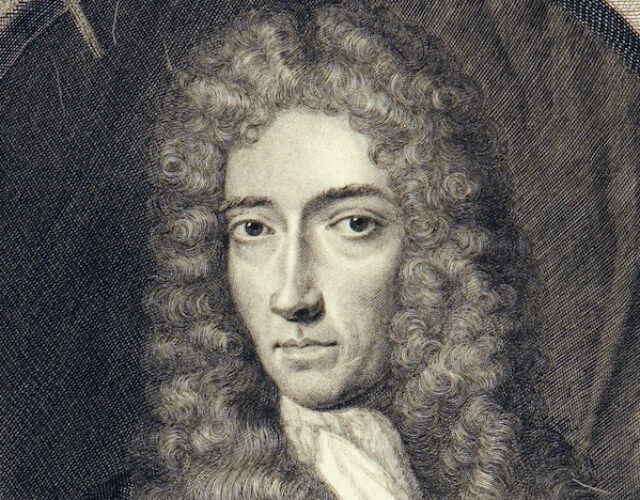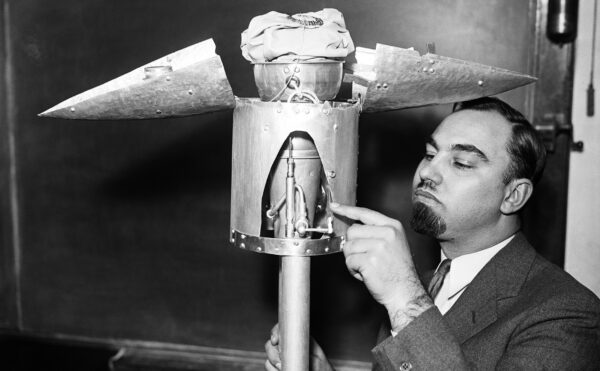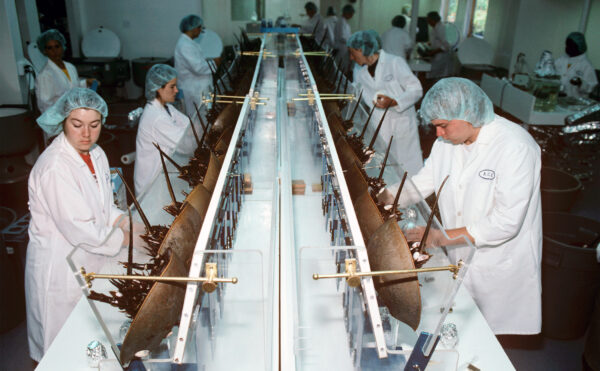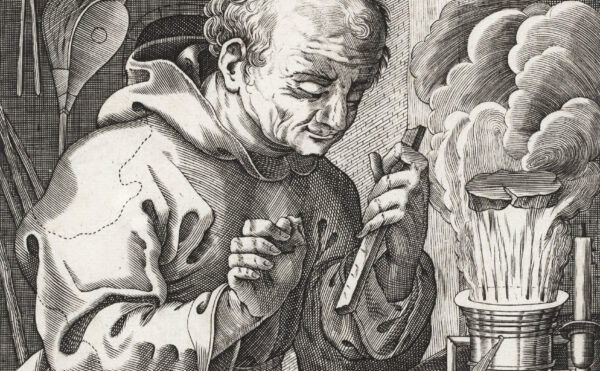Famous discoverers leave their mark on science, often eponymously: Volta with volts, Faraday with farads, and Newton with newtons. Robert Boyle is best known in chemistry classrooms for Boyle’s law, which describes the fundamental relationship between the pressure of a gas and the volume it occupies. Without any understanding of this relationship we would not know why weather changes or how our lungs work. But Boyle’s law was never stated outright in Boyle’s work.
Boyle was the seventh son of a fabulously wealthy nobleman. He is often called the first modern chemist and was a pioneer in rigorous experimentation. In 1660 Boyle published the first edition of New experiments physico-mechanicall, touching the spring of the air, and its effects which described experiments performed by Boyle and his assistant, Robert Hooke, to reduce air pressure. The book proved controversial as it attacked the science of the day. At the time, air was thought to be one of the four terrestrial elements, along with earth, fire, and water, and a vacuum was considered impossible. In this work, Boyle included 43 different experiments involving air and an air pump. He provided far more details than do modern scientists, listing all the tedious measurements he carried out, his difficulties with glass that shattered, and his struggles with glass tubes that were so long they had to be placed in a stairwell. As the air pump worked to lower pressure in a glass vessel, Boyle and Hooke discovered that sound did not travel as well, liquids vaporized more quickly, and without air animals died. Boyle, it turned out, could create a vacuum, or something close to it.
What we think of as Boyle’s law was originally published in 1662 in the appendix of the second edition of New experiments. This edition included arguments meant to defeat his scientific opponents, as well as a modest table of numbers displaying an inverse relationship between the pressure and volume of air. Though never explicitly stated, Boyle’s law could be found by following Boyle’s invitation to compare two columns in his table. The numbers came from an experiment in which Boyle and Hooke poured mercury into a glass J-shaped tube, which was sealed at the short end and left open at the tall end. As they kept pouring in mercury, the air trapped in the short end grew increasingly compressed. By measuring the height of the mercury Boyle was effectively measuring the pressure of the trapped air.
In 1676 a French priest, Edme Mariotte, independently published results showing the inverse relationship between pressure and volume. Mariotte went a step further than Boyle in stating that this relationship was valid only for a constant temperature. For these discoveries Boyle’s law is known as Mariotte’s law in France.
Hooke built the version of the air pump used by his employer. Though Hooke’s role has sometimes been neglected, today he is remembered by his own law, Hooke’s law, based on his work with physical springs. There is a direct connection between Hooke’s work on the “spring” of air and the relationship he found in the compression of a spring.
Boyle and his experimentally grounded law opposed the long-held view that knowledge was best got by the use of reason and logic, an approach initially worked out by Aristotle almost 2,000 years earlier. Boyle’s empirical approach, his rejection of the four elements in favor of “corpuscles” (little bits of matter that could combine), and his persuasive arguments won over many—perhaps most important, Isaac Newton. In 1660 a small group of British intellectuals formed what became the Royal Society and adopted the motto “Nullius in verba,” roughly meaning “take nobody’s word for it.” Boyle, a founding member of the society, believed that scientific knowledge should be based first on experiments.




